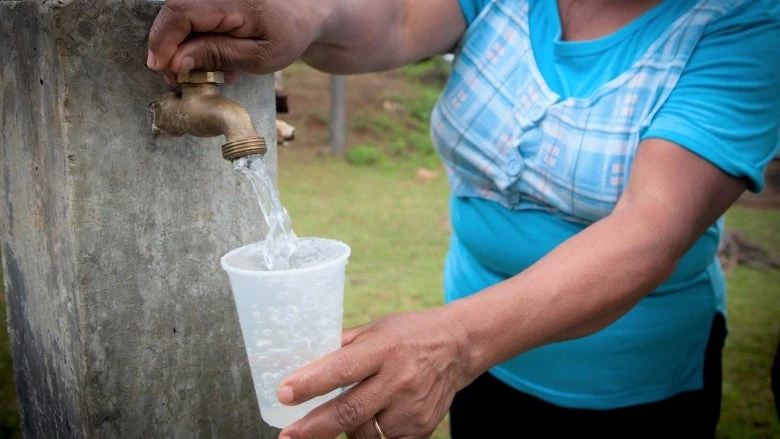
Four years ago, Juan Angel Sandoval, a resident of Barrio Buenos Aires in the Honduran municipality of Siguatepeque, received water at home only three times a week. His was not an isolated reality. Most of his neighbors, were in the same situation. "It was annoying because the water was not enough," says Juan Angel.
Today, most people in the Barrio Buenos Aires neighborhood have drinking water service 20 hours a day, and some neighbors even for 24 hours. This is a result of the improvements made to the city's aqueduct, something of key relevance because, as Juan Ángel points out, "water is vital for life". These changes were made possible by the Water and Sanitation Sector Modernization Project (Promosas), an initiative of the Government of Honduras, supported by the World Bank (WB).
Today, on World Water Day, it is very relevant to recognize these advances. Water is an essential element for development, because it plays a critical role reducing poverty and inequality, as well as boosting shared prosperity in the different countries. It also has direct consequences on human health and the environment. That is why water is a core component of the World Bank's program in Central America, a region that has made progress but still faces many challenges.
An example is the progress made, in recent years, regarding access to drinking water. According to the Global Development Indicators of the WB, in El Salvador this figure is currently 94%, which represents an important advance over the 70% recorded in 1990. Similarly, in 2015, access to drinking water in Honduras and Panama reached 91% and 95% respectively, up from 73% and 84% in 1990.
At the same time, the region still faces some challenges. One of them is that, according to the 2014 report “ Monitoring Country Progress in Drinking Water and Sanitation” (MAPAS), Central American countries will have to invest at least 0.41% of their annual GDP in order to meet their commitments under the Sustainable Development Goals (SDOs). This refers to investments not only to develop new projects, but also to rehabilitate existing ones.
This document, promoted by the Central American and Dominican Republic Water and Sanitation Forum (FOCARD-APS) and supported by the World Bank, also identifies other challenges. For example, in El Salvador, the fact that the population is growing faster than the rate of expansion of water and sanitation services could jeopardize the progress made so far.
In Honduras, there are still challenges in terms of the quality and performance of services, while in Panama, the rural and peri-urban areas remain largely neglected. In Guatemala, more than 53% of the population lacks access to improved sanitation, which can affect health and the environment, according to the recently released "Diagnostic of Water, Sanitation and Hygiene and its relationship to Poverty and Nutrition in Guatemala".
To help countries advance in this sector, the World Bank supports governments through:
- Investment projects. Such as Promosas, which supported the decentralization of nine water and sanitation services in Honduras, improving water and sanitation services for 108,000 families and 3,786 families respectively. In Panama, the Wastewater Management Project in Burunga contributes to improving access to sewerage services in the West zone and strengthens the wastewater management capacity of the main institutions in the sector. Likewise, in Guatemala, access to water is a key component of the project to reduce malnutrition Crecer Sano (Grow Healthy) and in Honduras, of the work to support food security in the Dry Corridor.
- Technical assistance. For example, the Bank accompanies the implementation of the National Water Resources Plan in Nicaragua which aims to improve the availability and quality of water and to protect groundwater resources. To this end, a multisectoral group was created, comprising different water-related agencies, to develop instruments to comply with the Water Resources Plan. Another example is the "Central American Regional Agenda and Action Plans", to support the governments of the isthmus achieve the universal sanitation SDG by 2030.
- Knowledge. The Bank has published a series of studies including systematic diagnostics prepared prior to assistance strategies with each country, analyses of public social spending, as well as the MAPAS report and the Diagnosis of Water, Sanitation and Hygiene and its relationship with Poverty and Nutrition in Guatemala.
All in all, we support efforts to facilitate access to water while reducing inequalities, to ensure the sustainability of water resources and to mitigate water-related risks in the face of global changes, all of which, today more than ever, are priority objectives for Central America.


Join the Conversation